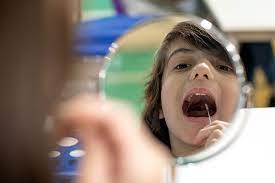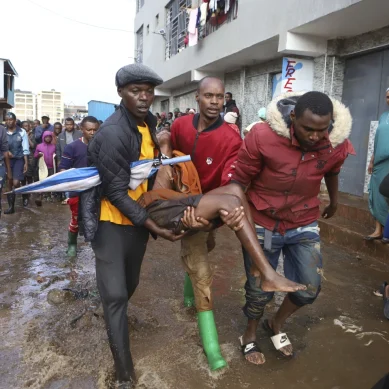
A comprehensive analysis of hospital admissions and reported deaths across England suggests that Covid-19 carries a lower risk of dying or requiring intensive care among children and young people than was previously thought.
In a series of preprints published on medRxiv1-3, a team of researchers picked through all hospital admissions and deaths reported for people younger than 18 in England. The studies found that Covid-19 caused 25 deaths in that age group between March 2020 and February 2021.
About half of those deaths were in individuals with an underlying complex disability with high healthcare needs, such as tube feeding or assistance with breathing.
The studies did not evaluate rates of less-severe illness or debilitating ‘long Covid’ symptoms that can linger months after the acute phase of the infection has passed.
“The low rate of severe acute disease is important news, but this does not have to mean that Covid does not matter to children,” says paediatrician Danilo Buonsenso at the Gemelli University Hospital in Rome. “Please, let’s keep attention – as much as is feasible – on immunisation.”
In one of the preprints, the researchers trawled for published accounts of Covid-19 among children and young people and ultimately analysed data from 57 studies and 19 countries. They then picked apart risk factors for severe disease and death from the data.
Some conditions, including obesity and cardiac or neurological conditions, were associated with a higher risk of death or intensive-care treatment, the researchers found. But the absolute increase in risk was very small, study author Rachel Harwood, a paediatric surgical registrar at Alder Hey Children’s Hospital in Liverpool, UK, told reporters at a media briefing.
For the other two preprints, the researchers focused on England, drawing on nationwide health-care data on intensive-care admissions and deaths among those under 18 years old. The team found that, of 6,338 hospital admissions for Covid-19, 259 children and young people required treatment in paediatric intensive-care units.
Black children were more likely than their white counterparts to require intensive care, both for Covid-19 and for paediatric multisystem inflammatory syndrome, a rare syndrome associated with coronavirus infection. But overall, the need for intensive care was “incredibly rare” among these patients, says study author Joseph Ward of the University College London Great Ormond Street Institute of Child Health.
Of 3,105 deaths from all causes among the 12 million or so people under 18 in England between March 2020 and February 2021, 25 were attributable to Covid-19 – a rate of about two for every million people in this age range. None had asthma or type-1 diabetes, the authors note, and about half had conditions that put them at a higher risk than healthy children of dying from any cause.
Taken together, the unusually comprehensive studies could provide some comfort to parents who have been shielding children who they thought might be vulnerable to severe complications from Covid-19. “There’s a general feeling among paediatricians that probably too many children were shielded during the first wave of the pandemic,” Russell Viner, who studies adolescent health at the University College London, told reporters.
In some cases, those efforts might have done more harm than good, added Elizabeth Whittaker, an infectious-disease specialist at Imperial College London. “Shields are very leaky,” she said. “The shields have not been perfect, and have probably caused more stress and anxiety for families than benefit.”
The work does not tackle the spectre of long Covid, but other studies suggest that it does occur in children – including in those who had mild initial symptoms or were asymptomatic – but less frequently than in adults.
Despite the very low death and intensive-care rates, Buonsenso hopes that schools will embrace measures such as masks and improved ventilation and that parents will focus on immunisation – for either their children, where possible, or themselves.
“When adults are immunised, fewer children are infected,” he says. “We need to do as much as possible to reduce Covid-19 infection in children.”
- A Nature magazine report











